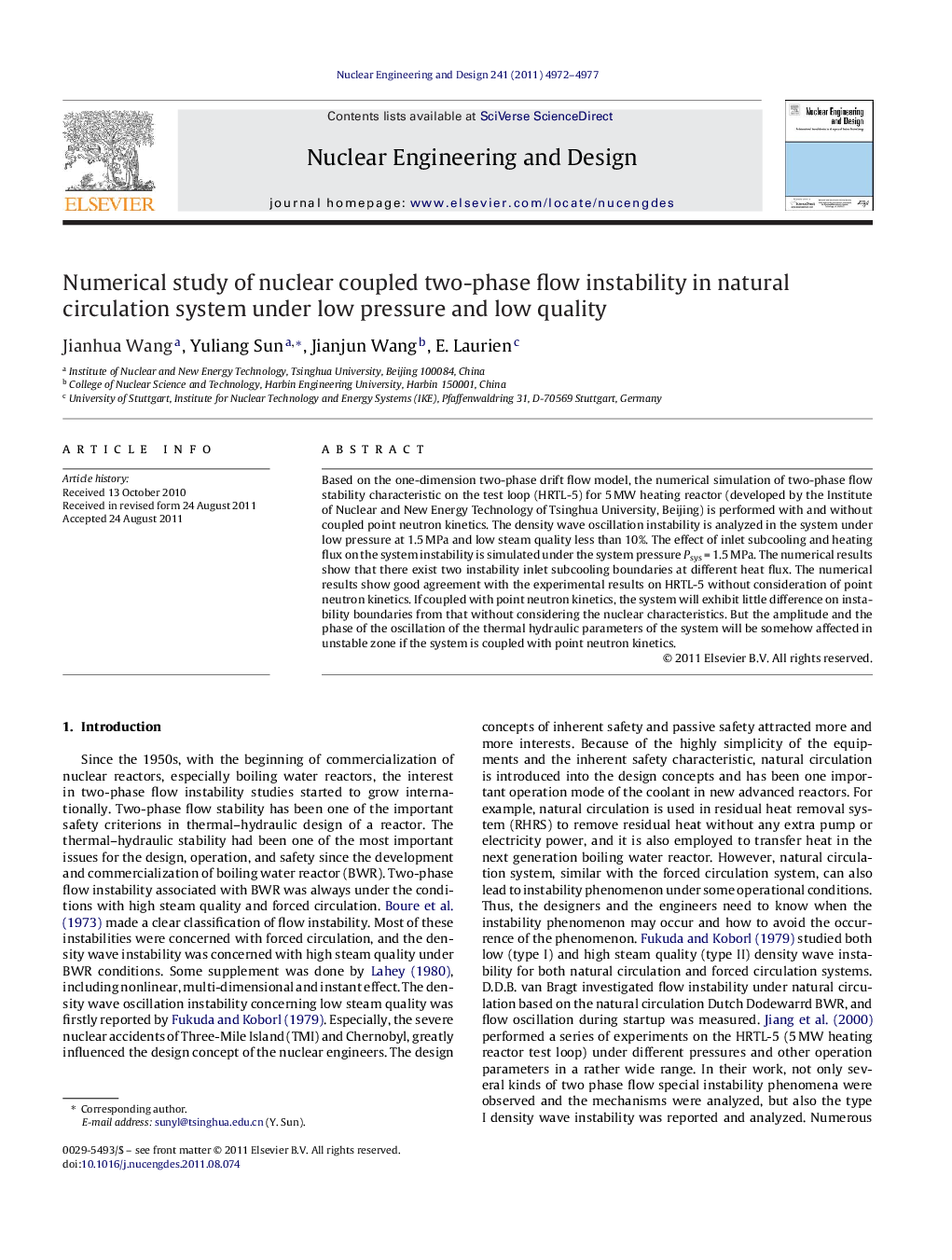| Article ID | Journal | Published Year | Pages | File Type |
|---|---|---|---|---|
| 297610 | Nuclear Engineering and Design | 2011 | 6 Pages |
Based on the one-dimension two-phase drift flow model, the numerical simulation of two-phase flow stability characteristic on the test loop (HRTL-5) for 5 MW heating reactor (developed by the Institute of Nuclear and New Energy Technology of Tsinghua University, Beijing) is performed with and without coupled point neutron kinetics. The density wave oscillation instability is analyzed in the system under low pressure at 1.5 MPa and low steam quality less than 10%. The effect of inlet subcooling and heating flux on the system instability is simulated under the system pressure Psys = 1.5 MPa. The numerical results show that there exist two instability inlet subcooling boundaries at different heat flux. The numerical results show good agreement with the experimental results on HRTL-5 without consideration of point neutron kinetics. If coupled with point neutron kinetics, the system will exhibit little difference on instability boundaries from that without considering the nuclear characteristics. But the amplitude and the phase of the oscillation of the thermal hydraulic parameters of the system will be somehow affected in unstable zone if the system is coupled with point neutron kinetics.
► We set up model for analyzing low pressure and low quality two-phase flow system. ► Numerical simulation of thermal hydraulic and neutron kinetic coupling are performed. ► Increase Doppler effect feedback coefficient stabilizes the system. ► Increase void reactivity feedback coefficient destabilizes the system.
